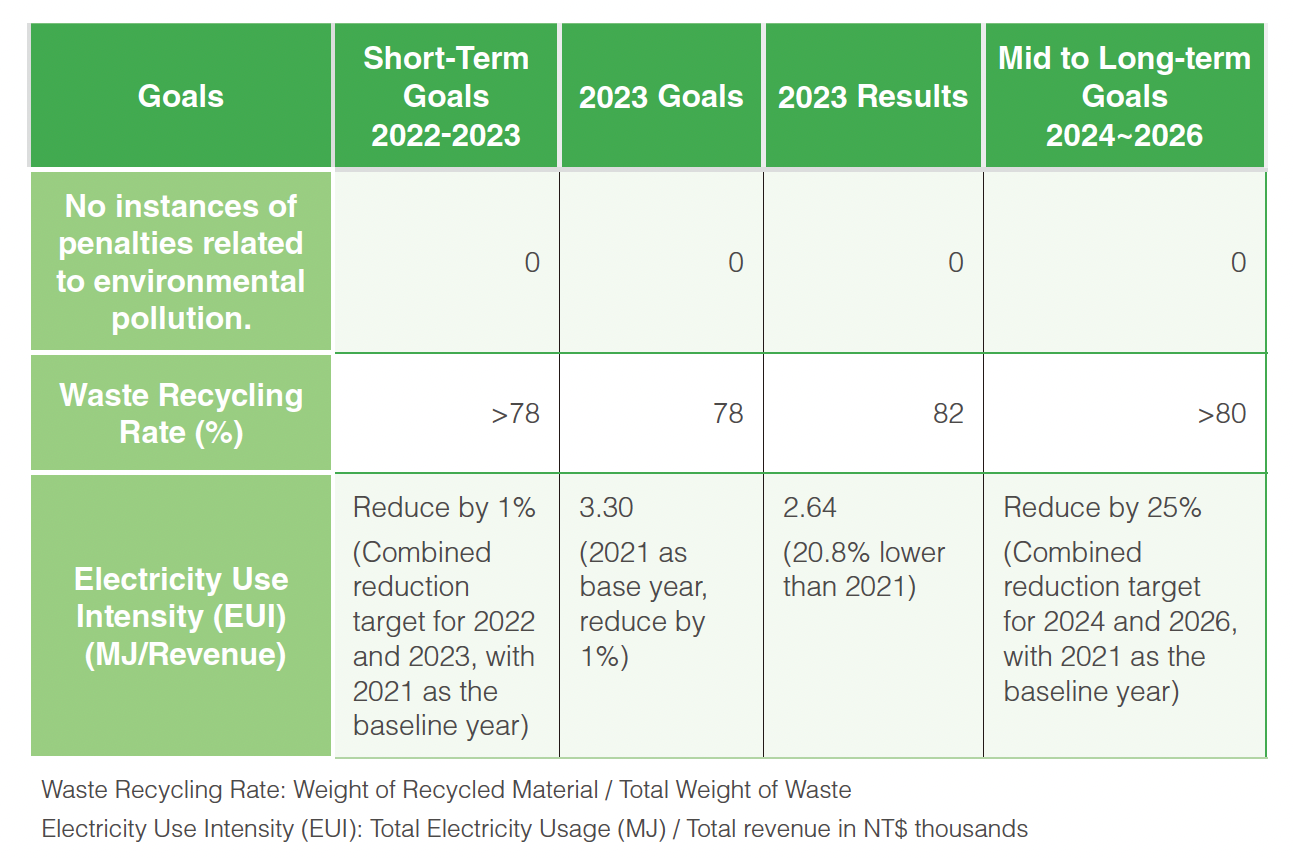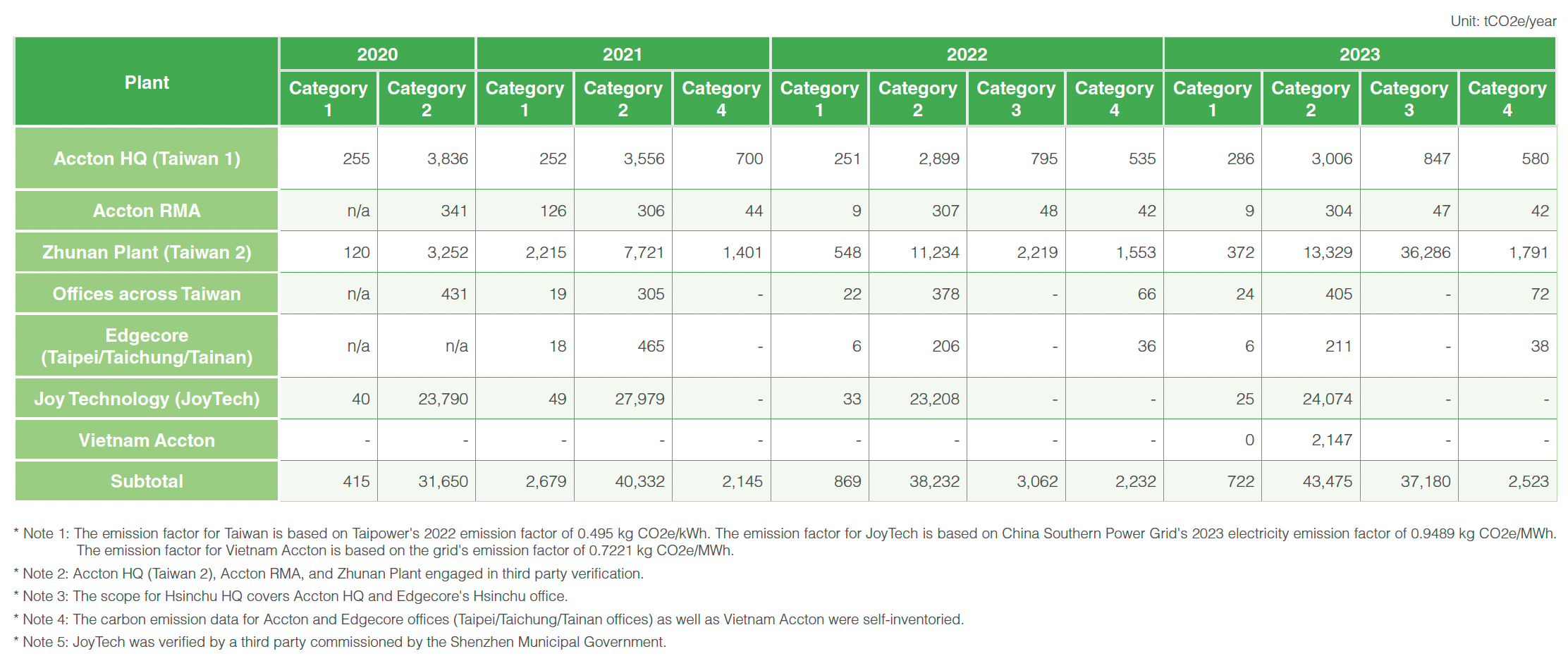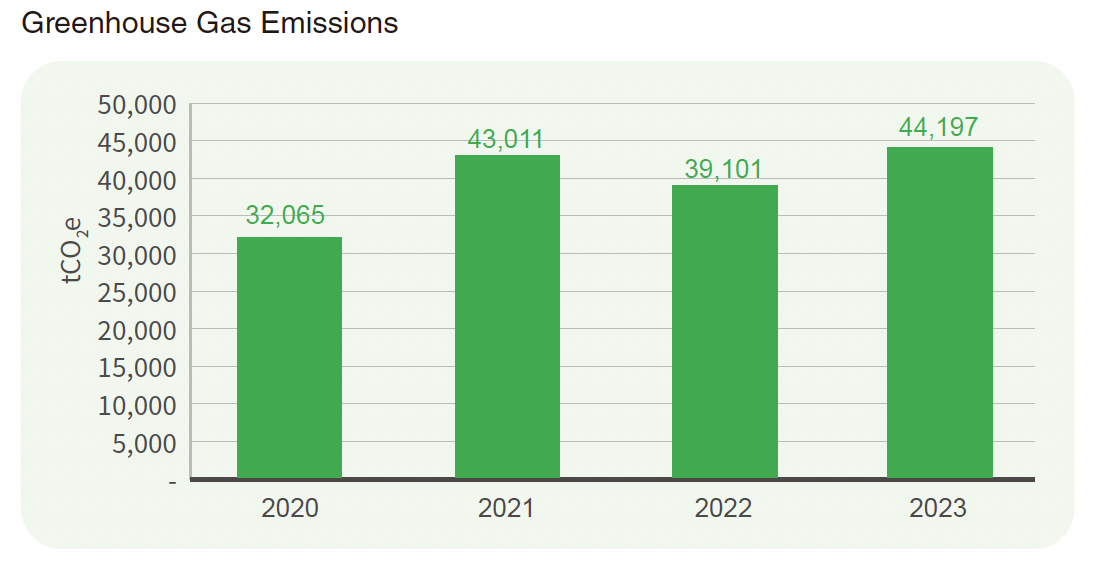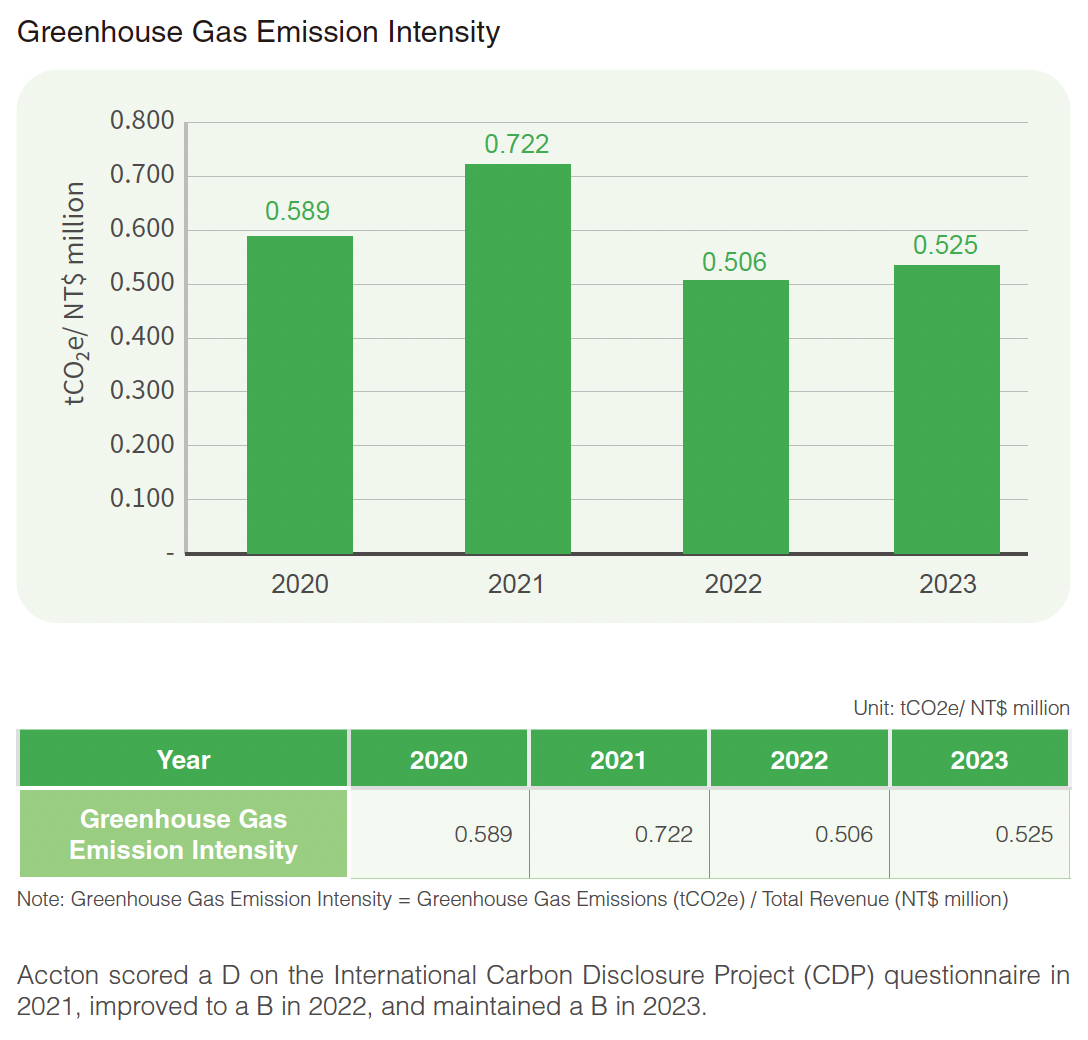Environmental Management
Boundary: Includes manufacturing plants: Accton HQ (Plant 1) and Plant 2 in Hsinchu, Zhunan Plant in Miaoli, offices in Taipei, Taichung, and Tainan, and subsidiaries Edgecore, JoyTech in Shenzhen, China, and Vietnam Accton manufacturing plant. Vietnam Accton manufacturing facility commenced operations in 2023; therefore, there is no relevant data prior to 2022.
I. Environmental Safety and Health Policy
Accton remains deeply committed to the stewardship of Earth’s resources and sustainable development, integrating an environmental safety and health management system throughout our entire management framework. We assess the interrelations between processes, products, and the environment, and identify potential safety risks in our manufacturing activities. To prevent accidents and establish emergency response systems, we commit to maintain and continually improve our environmental safety and health practices, ensuring a safe and healthy workplace to achieve sustainable corporate growth. To effectively drive and manage these initiatives, we pledge to:
1. Comply with domestic occupational safety and health regulations, and effectively implement and continuously improve our safety and health management systems.
2. Actively promote resource recycling and industrial waste reduction.
3. Enhance education for employees and manage suppliers and contractors with rigorous environmental safety and health training and awareness.
4. Proactively eliminate unsafe acts and conditions to prevent accidents.
5. Maintain employee health and achieve zero accidents.
II. Strategy
To achieve environmental protection and sustainable business operations, we actively set management goals for the use and pollution control of various energy resources and continually improve these processes. Implement environmental management to reduce pollution, enhance resource recycling and waste reduction benefits, balance economic and environmental considerations, and fulfill our corporate social responsibilities. To actualize energy conservation and environmental protection, Accton actively implements various energy-saving initiatives in manufacturing facilities and offices, conducting periodic internal audits and third-party verifications to ensure compliance with ISO 14001, ISO 14064, ISO 50001, and relevant environmental regulations.
Environmental and energy management certifications: www.accton.com.tw/esg-documents
III. Management Objectives

Implementation of ISO 14001 environmental management system
By upholding the business philosophy of respect for life and with a deep understanding of the importance of Earth’s limited resources and the importance of sustainable development, we completed the annual certification of the environmental management system ISO 14001:2015 for Accton’s Plant 1, Plant 2, and Zhunan Plant, and for JoyTech
Energy Saving and Carbon Reduction
I. Greenhouse Gas Emissions Statistics
Accton is actively responding to international carbon reduction trends by setting 2021 as the baseline year, with goals to reduce carbon emissions by 50% by 2030 and achieve net-zero carbon emissions by 2050. The first phase of carbon reduction involves a comprehensive greenhouse gas inventory. The boundaries primarily include: Direct greenhouse gas emissions and removals (Category 1) and indirect greenhouse gas emissions from imported energy (Category 2). Other indirect greenhouse gas emission sources (Categories 3 to 6) are considered based on the significance principle by evaluating data sources and quality. Starting from 2022, the calculation scope was expanded to include: 3.1 Emissions from upstream cargo transportation and distribution; 3.3 Emissions from employee commuting; 3.5 Emissions from business travel; 4.1 Emissions from purchased goods; 4.3 emissions from solid and liquid waste disposal. In 2023, the carbon emissions in Categories 1 and 2 were higher compared to 2022, primarily due to the capacity expansion at Vietnam Accton’s and Zhunan plants. The verification process referenced the ISO 14064-1:2018 standard and the Ministry of Environment’s greenhouse gas inventory and registration guidelines.

◆ Historical Greenhouse Gas Emissions (Categories 1+2)

II. Greenhouse Gas Emission Intensity
In response to international trends, greenhouse gas emission intensity has been added as a management indicator. The table below indicates the relationship between Category 1 and Category 2 data and revenue. Starting from 2022, Categories 3 to 6 data are disclosed according to the significance principle of ISO 14064, revealing related upstream and downstream carbon emissions data.





